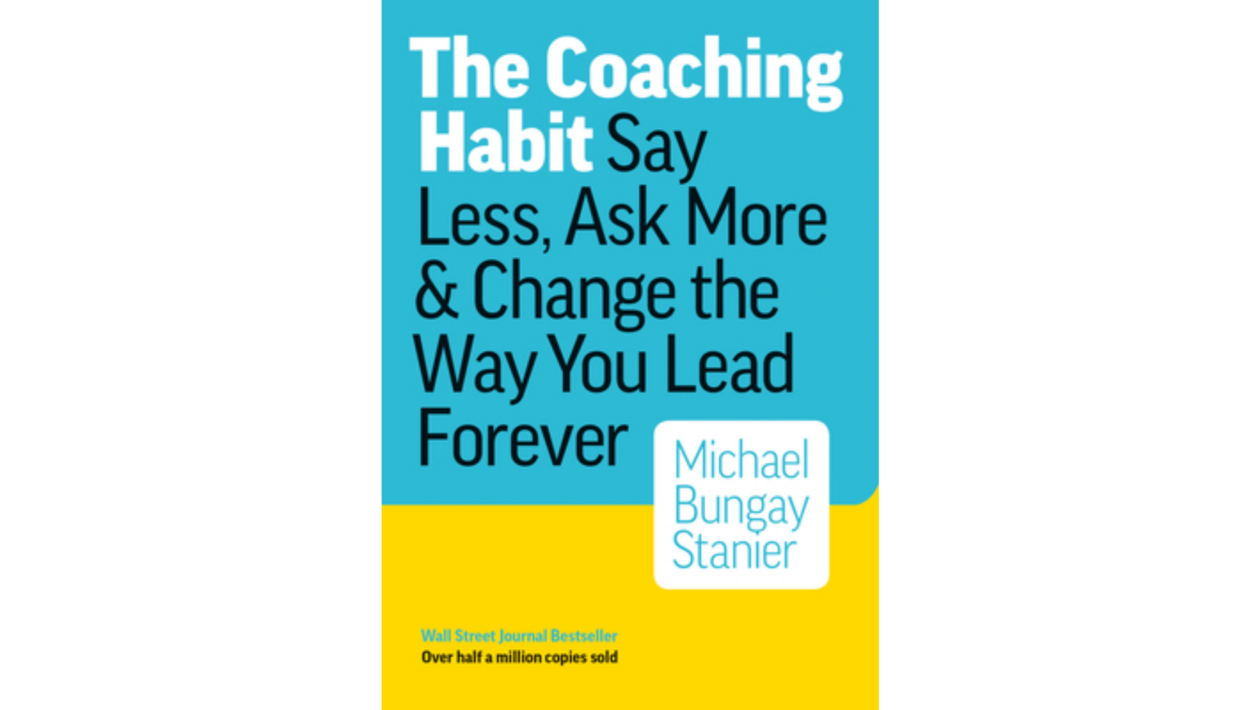By Michael Bungay Stanier
Toronto, ON: Post Hypnotic Press (2016)
Kindle version, 251 pages
Reviewed by SAMUEL RIEMERSMA
Michael Stanier’s focus is summarized in the title of the book: “How to coach people more effectively by saying less and asking more.” Coaching is one of the most effective leadership strategies; however, the problem is that few leaders embrace this leadership method. The few who do embrace it don’t seem to be very effective at coaching (loc. 132). This book encourages the reader to create specific coaching habits and does so in an informal, accessible writing style.
Stanier encourages the reader to incorporate seven questions into their professional interactions, using these questions in such a way that they will become habits. He ends each chapter with a “habit formation challenge,” in which he encourages the reader to identify the trigger that sets off the wrong behavior; he then encourages them to make a tangible step towards replacing this with specific new behavior.
The book spends considerable time explaining the need for creating healthy communication habits and demonstrating the science behind successful habit formation. For this topic, Stanier leans heavily on research by Charles Duhigg, author of The Power of Habit. The frequent borrowing of ideas is characteristic of this book, as it contains many references to a great variety of authors. Some readers might leave with the impression of well-rounded research; however, to others, especially those who have read extensively on the topic of coaching, this might seem like a recap of existing research in a new package.
Before the book launches into the first question, it addresses the proper way to ask a question by encouraging the reader to ask one question at a time, and not to practice “drive-by questioning.” This seems like common sense, but the natural response of people is to bombard their coworkers with questions, which makes the conversation feel more like an interrogation (loc. 208).
The power of this book lies in its simplicity. The content revolves around the seven coaching questions, and each of these questions is so simple that a child can understand them. The questions are common sense, and they work. It is surprising to realize how many times we create unhelpful habits and say things in our counterproductive interactions. The book is filled with many real-life examples that make the theory come alive and help the reader to see the power of the specific question (loc. 662).
Stanier filled this book with practical applications for Christian leaders and anyone with careers in ministry. One of the practical nuggets in the book has to do with “taming the advice monster” (loc. 464). A 1984 study is quoted that found that the average time for doctors to interrupt their patients was 18 seconds. Examples like this make the reader wonder how long we listen to our conversation partner before we interrupt them. It also shows the need for a method to counteract our instincts to give advice. Asking the “And what else?” questions not only help us tame the advice monster, but it is also a “way to uncover and create new possibilities” (loc. 502).
Another piece of practical advice for every person involved in ministry is the understanding that one can only coach a person in front of him or her. If the conversation revolves around the problems of some other third person, the best question to ask is, “What is the real challenge here for you?” This puts the focus back on the conversation partner instead of some other person or circumstance that we cannot change.
This book contains another extremely relevant chapter for Christian leaders, the chapter on being helpful. Pastors especially are under great obligation to please their parishioners and set an example of Christian service. The problem the book brings to the forefront is the fact that, in their desire to be helpful, leaders often step in and take over (loc. 928). By doing so, they raise their status and lower the status of those they are trying to “help.” By asking, “How can I help?” we allow those around us to determine the kind of help they need, if any. Also, this gives leaders the final say in whether they can fulfill the request.
I give this book my strongest recommendation for any kind of leader who wants to be more effective in their interactions–especially those in ministry. This book is good for anyone who deals with people daily and who is looking for practical ways to improve their coaching skills. The easy reading style and many practical examples make the material stick. If, after reading this book, only one of the coaching habits becomes a habit in the reader’s life, reading the book will have been worth it.
SAMUEL RIEMERSMA is the pastor of the Community Seventh-day Adventist Church in Meridian, Mississippi.

